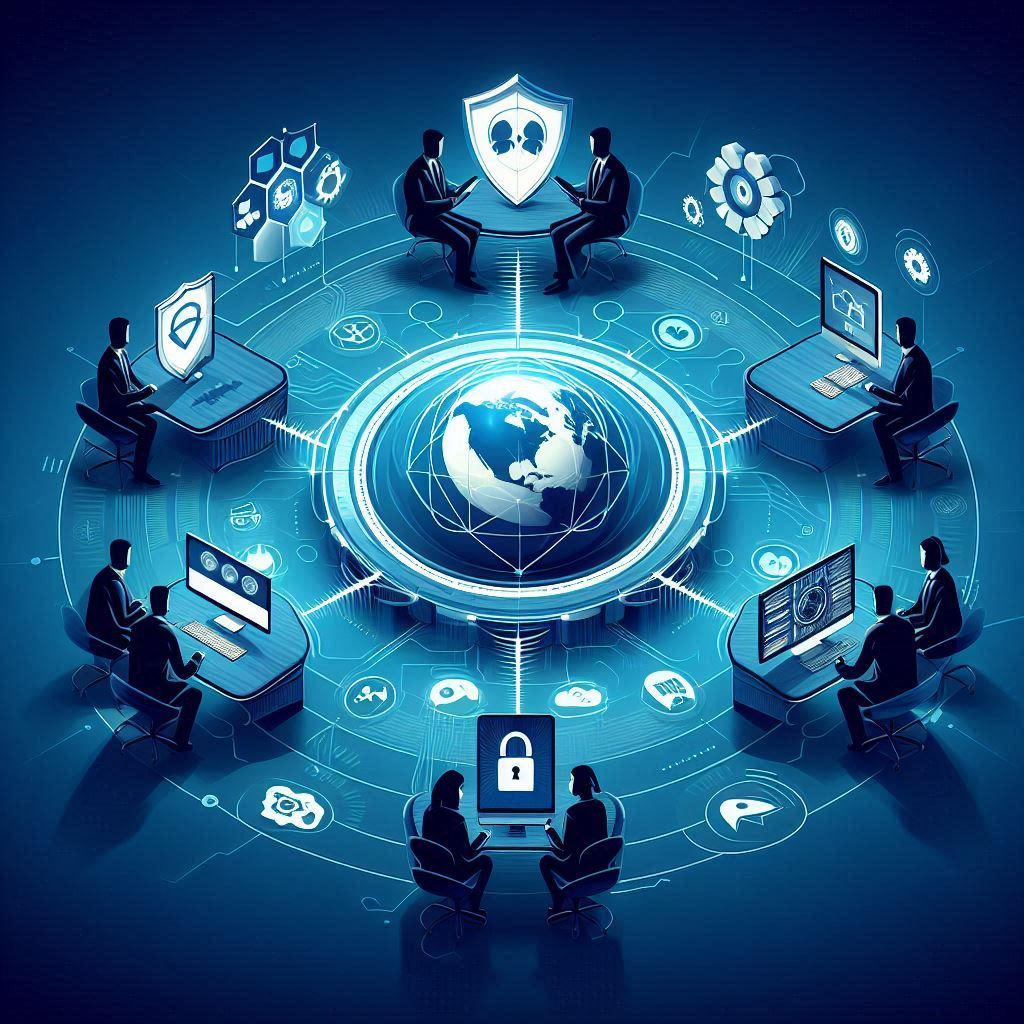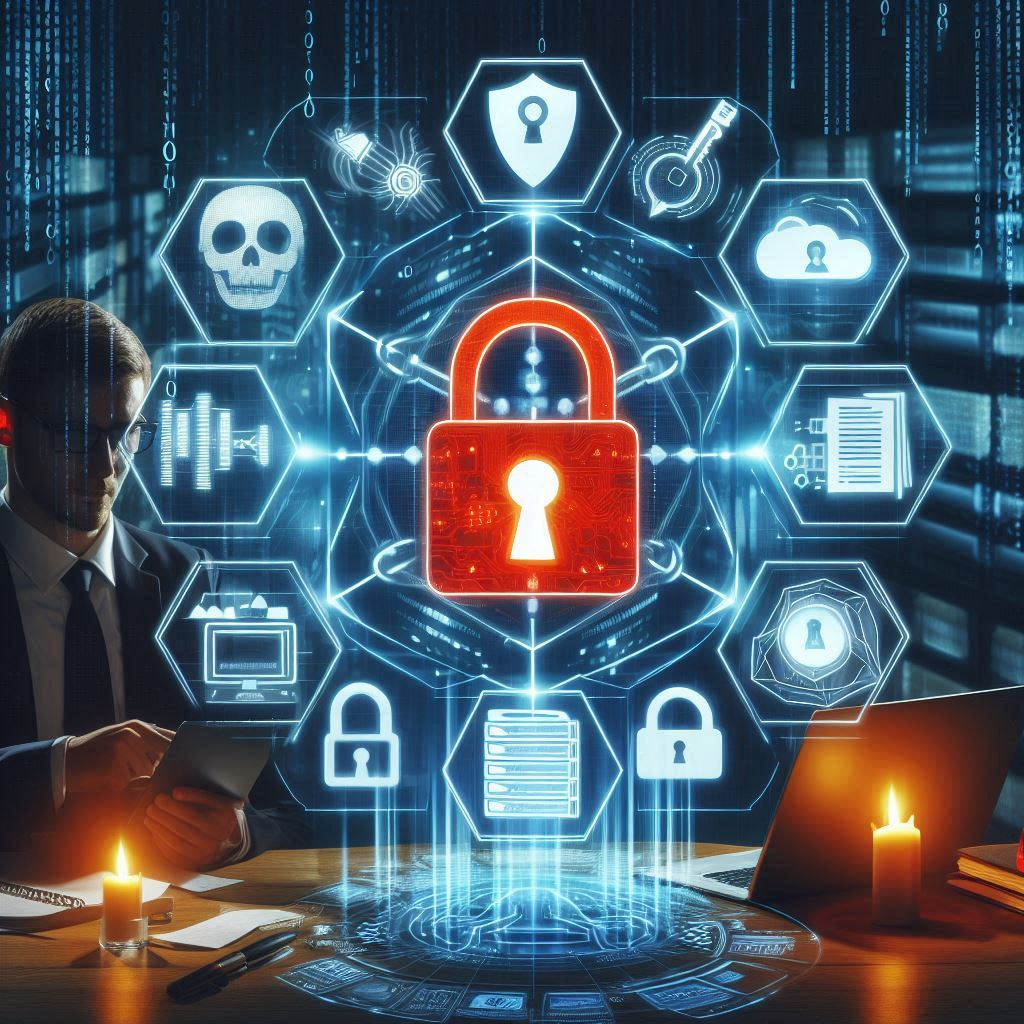In the rapidly evolving digital landscape, businesses face an ever-increasing array of cybersecurity threats. To combat these challenges and safeguard their digital assets, many organizations turn to Managed Security Service Providers (MSSPs). MSSPs are specialized firms that deliver a wide range of security services, designed to protect, monitor, and manage an organization’s security infrastructure. These services are critical in ensuring that a business remains compliant with industry regulations, mitigates risks, and responds promptly to security incidents.
The core offerings of MSSP services typically include threat detection and response, vulnerability management, security monitoring, and incident management. These providers leverage advanced technologies and expert knowledge to offer continuous protection and keep pace with the sophisticated tactics employed by cyber adversaries. MSSPs are not merely reactive; they proactively identify potential vulnerabilities and implement measures to prevent threats from materializing.
In today’s interconnected world, the significance of MSSP services cannot be overstated. With cyber threats becoming more frequent and sophisticated, businesses must adopt a proactive stance in their security strategies. MSSPs provide this proactive defense, offering specialized expertise and round-the-clock surveillance that most in-house IT departments may lack. This continuous vigilance is essential for identifying and neutralizing threats before they can cause significant harm.
Among the critical components of MSSP services, 24/7 threat monitoring stands out as a fundamental element. This round-the-clock surveillance ensures that any potential security breach is promptly detected and addressed, minimizing the impact on the organization. Continuous threat monitoring allows MSSPs to rapidly identify and respond to security incidents, providing a robust defense against the ever-present risk of cyber attacks. By maintaining a state of constant readiness, MSSPs help businesses navigate the complexities of the digital age with confidence.
Understanding 24/7 threat monitoring is crucial for grasping the fundamental mechanisms that underpin effective Managed Security Service Provider (MSSP) services. At its core, 24/7 threat monitoring involves the continuous surveillance of an organization’s IT infrastructure to detect and respond to cyber threats in real time. This perpetual state of vigilance is achieved through a combination of advanced technologies and comprehensive methodologies designed to provide robust cybersecurity.
Key technologies that facilitate 24/7 threat monitoring include Security Information and Event Management (SIEM) systems, Intrusion Detection Systems (IDS), and Intrusion Prevention Systems (IPS). SIEM systems aggregate and analyze log data from various sources within an organization’s network, identifying patterns that may indicate a security breach. IDS and IPS, on the other hand, monitor network traffic for suspicious activity, with IPS capable of taking immediate action to thwart identified threats.
In addition to these technologies, machine learning and artificial intelligence (AI) play an increasingly significant role in enhancing threat detection capabilities. These technologies enable the automation of threat identification processes, allowing for faster and more accurate detection of anomalies that could signify a cyber attack. Moreover, behavioral analytics tools observe and analyze user and entity behavior to detect deviations from the norm, which may indicate insider threats or compromised accounts.
The methodologies employed in 24/7 threat monitoring are equally vital. Continuous monitoring involves not only the detection of threats but also the assessment of vulnerabilities and the implementation of timely responses. This proactive approach is essential for mitigating risks before they escalate into more significant issues. Regular threat intelligence updates and vulnerability assessments ensure that the monitoring system remains effective against evolving cyber threats.
The necessity for constant vigilance in cybersecurity cannot be overstated. Cyber threats are becoming increasingly sophisticated and persistent, making it imperative for organizations to maintain round-the-clock monitoring. Continuous monitoring aids in the early detection of potential threats, enabling swift response and mitigation measures. This not only minimizes the potential damage but also ensures the integrity and security of sensitive data and critical systems.
Key Components of Effective Threat Monitoring
Effective threat monitoring is a multi-faceted approach that relies on an array of sophisticated tools and technologies to maintain a robust security posture. One of the cornerstone tools in this arsenal is the Security Information and Event Management (SIEM) system. SIEM systems aggregate and analyze data from various sources across the network, providing real-time insights into potential security incidents. By correlating events and generating alerts, SIEM systems enable security teams to quickly identify and respond to threats.
Intrusion Detection Systems (IDS) and Intrusion Prevention Systems (IPS) are also crucial components. IDS solutions monitor network traffic for suspicious activities and known attack patterns, alerting administrators when an anomaly is detected. IPS goes a step further by not only detecting but also actively blocking potential threats, thus serving as both a detection and a prevention tool.
Network monitoring tools add another layer of security by continuously analyzing network performance and traffic patterns. These tools help in identifying unusual activities that could indicate a security breach. By providing visibility into network behavior, they enable rapid detection and mitigation of threats, ensuring that any anomalies are promptly addressed.
Artificial Intelligence (AI) and Machine Learning (ML) technologies are increasingly being integrated into threat monitoring solutions. These advanced technologies enhance the ability to identify threats by analyzing vast amounts of data and recognizing patterns that might be missed by traditional methods. AI and ML can adapt and learn over time, improving their accuracy and reducing false positives, thus allowing security teams to focus on genuine threats.
Together, these components create a comprehensive security ecosystem that not only detects but also responds to threats in real-time. By leveraging SIEM systems, IDS/IPS, network monitoring tools, and the power of AI and ML, organizations can maintain a strong and effective security posture, safeguarding their networks against the ever-evolving landscape of cyber threats.
The Role of Human Expertise in Threat Monitoring
In the realm of 24/7 threat monitoring, human expertise plays a pivotal role that goes beyond the capabilities of automated systems. While automated tools are indispensable for their speed and efficiency in identifying potential threats, it is the cybersecurity analysts and experts who bring an essential layer of strategic insight and nuanced understanding. These professionals interpret complex data, discern subtle patterns, and make informed decisions that automated systems alone cannot achieve.
Cybersecurity analysts are adept at recognizing sophisticated threats that may evade automated detection. Their expertise allows them to identify anomalies and suspicious activities that require a deeper level of scrutiny. For instance, a seasoned analyst can distinguish between benign irregularities and genuine threats, something that an automated system might struggle to do without human oversight. This level of discernment is critical in minimizing false positives and ensuring that real threats are addressed promptly.
Moreover, human experts are essential in responding to incidents with agility and precision. When a potential threat is identified, it is the cybersecurity professionals who assess the situation, determine the severity, and implement appropriate countermeasures. Their ability to think critically and act decisively in high-pressure situations ensures that threats are mitigated effectively, minimizing potential damage and downtime.
Beyond immediate response, human expertise is crucial in providing strategic insights for long-term security planning. Cybersecurity professionals conduct thorough analyses of incidents and trends, offering recommendations to enhance existing security measures. They fine-tune automated systems, ensuring they are optimally configured to address evolving threats. This continuous improvement process, driven by human insight, is vital for maintaining robust and adaptive security postures.
In conclusion, the integration of human expertise with automated threat monitoring systems creates a formidable defense against cyber threats. The unique skills and insights provided by cybersecurity analysts are indispensable in interpreting data, responding to incidents, and refining security strategies, thus ensuring comprehensive and effective threat monitoring.
Benefits of 24/7 Threat Monitoring for Businesses
Implementing 24/7 threat monitoring provides businesses with a robust security posture that significantly mitigates the risks associated with cyber threats. One of the primary benefits is the enhancement of the overall security framework. Continuous monitoring ensures that any potential vulnerabilities are identified and addressed in real-time, preventing breaches before they can cause substantial damage.
Reduced downtime is another crucial advantage. In the event of a cyber attack or system anomaly, immediate detection and response minimize operational interruptions. For example, a financial services company might experience a breach attempt during off-hours. With 24/7 threat monitoring, the threat can be neutralized swiftly, ensuring that business operations continue seamlessly, thereby preserving customer trust and avoiding financial losses.
Faster incident response is an inherent benefit of round-the-clock monitoring. By having a dedicated team of experts continuously analyzing network traffic and system behavior, businesses can respond to incidents almost instantaneously. Consider a retail business that operates an online store. If a security incident occurs during peak shopping hours, the rapid response facilitated by 24/7 monitoring can prevent significant data loss and financial repercussions.
Compliance with regulatory requirements is also significantly bolstered through continuous threat monitoring. Many industries are subject to stringent regulations regarding data protection and cybersecurity. For instance, a healthcare provider must comply with HIPAA regulations, which mandate rigorous protection of patient data. 24/7 threat monitoring helps ensure that such regulatory requirements are consistently met, thereby avoiding costly fines and legal issues.
Finally, 24/7 threat monitoring provides business owners with peace of mind. Knowing that their business is protected around the clock allows them to focus on core operations and strategic growth without constantly worrying about potential cyber threats. This constant vigilance ensures that any threat is promptly addressed, maintaining the integrity and reputation of the business.
Challenges in Implementing 24/7 Threat Monitoring
Implementing 24/7 threat monitoring is not without its challenges. One of the primary obstacles organizations face is the high cost of implementation. This encompasses not just the initial investment in sophisticated monitoring tools, but also the ongoing expenses related to hiring skilled security professionals and maintaining the necessary infrastructure. These financial demands can be particularly burdensome for small to medium-sized enterprises (SMEs) that may already operate under tight budgets.
Another significant challenge is the complexity involved in integrating 24/7 threat monitoring systems with existing IT infrastructure. Many organizations have legacy systems that were not designed with modern cybersecurity measures in mind. The integration process can be time-consuming and may require extensive customization to ensure seamless operation. This complexity often necessitates the involvement of third-party experts, further driving up costs and extending implementation timelines.
Managing false positives is also a critical issue when it comes to continuous threat monitoring. Advanced monitoring systems generate vast amounts of data, and distinguishing between genuine threats and benign anomalies can be difficult. False positives not only waste valuable time and resources but can also desensitize security teams, potentially leading to overlooked real threats. Employing advanced machine learning algorithms and regularly updating threat detection rules can help mitigate this problem.
The need for continuous updates and maintenance is another challenge that cannot be overlooked. Cyber threats are constantly evolving, and what may be a minor vulnerability today could become a significant risk tomorrow. Continuous monitoring solutions require regular updates to their software and threat databases to remain effective. This necessitates a dedicated team of experts who can stay abreast of the latest developments in the cybersecurity landscape and ensure that the monitoring system is always up to date.
To mitigate these challenges, organizations can consider partnering with a managed security service provider (MSSP). MSSPs offer specialized expertise and resources, making it easier to implement and maintain 24/7 threat monitoring without bearing the full burden of cost and complexity. Additionally, leveraging the MSSP’s experience can help in efficiently managing false positives and ensuring continuous updates and maintenance.
Selecting the Right MSSP for Your Business
Choosing the right Managed Security Service Provider (MSSP) is a critical decision that can significantly impact an organization’s cybersecurity posture. The selection process should be guided by a comprehensive evaluation of several key criteria to ensure the MSSP aligns with the specific needs of your business.
First and foremost, consider the MSSP’s experience and track record. An MSSP with a proven history in the industry will likely possess a deep understanding of the evolving threat landscape and the expertise to address complex security challenges. Look for providers with a solid reputation, client testimonials, and case studies that demonstrate their ability to deliver effective security solutions.
The range of services offered by the MSSP is another vital factor. It is essential to choose a provider that offers a comprehensive suite of services, including threat detection, incident response, vulnerability management, and compliance monitoring. A broad service offering ensures that all aspects of your security needs are covered under a single roof, providing a more cohesive and integrated approach to managing threats.
Technological capabilities are equally important. The MSSP should employ advanced security technologies and tools to provide continuous monitoring and proactive threat detection. Evaluate their use of cutting-edge solutions such as artificial intelligence, machine learning, and automated response systems, which can enhance the efficiency and effectiveness of threat management.
Customer support is a critical component of any MSSP relationship. Opt for a provider that offers robust support options, including 24/7 availability, dedicated account managers, and a responsive helpdesk. Reliable customer support ensures that any issues are promptly addressed, minimizing potential disruptions to your business operations.
Scalability is another key consideration. As your business grows, your security needs will evolve. The MSSP should be capable of scaling their services to accommodate your expanding requirements, whether it involves increasing monitoring capacity, adding new security features, or adapting to new regulatory requirements.
Vetting potential MSSPs involves asking the right questions. Inquire about their incident response times, the specific technologies they use, their approach to threat intelligence, and their policies regarding data privacy and protection. Additionally, reviewing and understanding the Service Level Agreements (SLAs) is crucial. SLAs should clearly define the scope of services, performance metrics, response times, and penalties for non-compliance, ensuring that you have a clear understanding of what to expect from the partnership.
By meticulously evaluating these factors, you can select an MSSP that not only meets your current security requirements but also supports your long-term business objectives.
Future Trends in Threat Monitoring and MSSP Services
The landscape of threat monitoring and Managed Security Service Provider (MSSP) services is continuously evolving, driven by advancements in technology and the ever-changing nature of cyber threats. One of the most significant trends set to shape the future of this field is the increasing adoption of Artificial Intelligence (AI) and machine learning. These technologies are becoming essential tools for MSSPs, enabling them to swiftly analyze vast amounts of data, identify anomalies, and respond to threats in real-time. AI’s capability to learn and adapt is particularly crucial in staying ahead of sophisticated cyber-attacks that are constantly evolving.
Another emerging trend is the rise of Managed Detection and Response (MDR) services. Unlike traditional threat monitoring, MDR provides a more proactive approach, focusing not just on identifying threats but also on responding to and mitigating them. This service model is gaining traction as organizations realize the importance of having an integrated approach that combines continuous monitoring with incident response capabilities. With MDR, MSSPs can offer a more comprehensive security solution that includes threat hunting, incident analysis, and rapid response to security breaches.
Cloud security is also becoming increasingly paramount as more businesses migrate their operations to cloud environments. This shift necessitates that MSSPs adapt their strategies to protect cloud-based assets effectively. The complexity of cloud infrastructures calls for advanced security measures that can handle the dynamic nature of cloud services. MSSPs are now investing in cloud-native security tools that provide enhanced visibility and control over cloud environments, ensuring that both on-premises and cloud assets are equally protected.
As the threat landscape continues to evolve, MSSPs must remain agile, continuously updating their methodologies and technologies to counter new and emerging threats. The integration of AI and machine learning, the adoption of MDR services, and the focus on cloud security are just a few of the trends that underscore the future direction of threat monitoring and MSSP services. These advancements not only enhance the ability to detect and respond to threats but also ensure that organizations can maintain robust security postures in an increasingly complex digital world.



